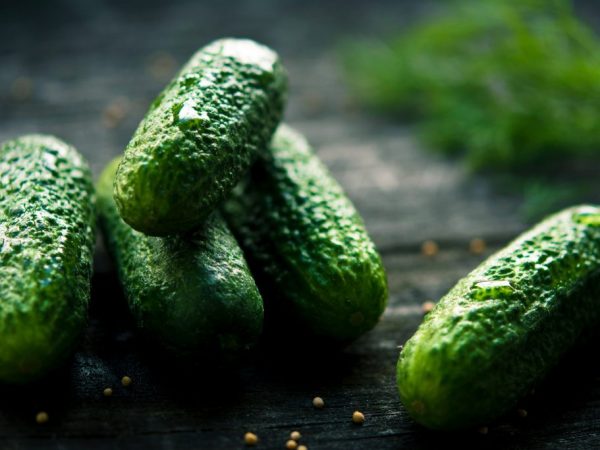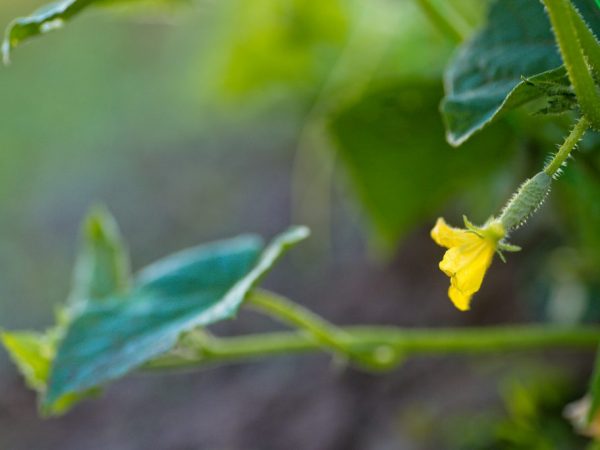Features of the Connie cucumber variety
Quite often, gardeners pay attention to exactly that variety of vegetables that does not require special care and can independently carry out pollination. Fortunately, Connie F1 can be self-pollinated. This allows him to be popular among many well-known farmers.

Features of the Connie cucumber variety
Characteristics of the variety
Sedek recently launched this variety on the market. In just a few months, this cucumber has won the hearts of many inhabitants of the planet with its positive characteristics. A few years later, this variety was entered into the National Register of the Russian Federation.
This variety is suitable for planting anywhere in the country. It can show high quality and yield characteristics, both in the Far North and in the South of the country. In very low temperatures, it can be grown in a greenhouse. But in warm regions, its cultivation can be carried out in the open field.
This hybrid belongs to self-pollinated crops. It matures in an average amount of time. That is, from the time of the first shoots to full maturation, only 40-50 days pass. This variety can be grown both in the greenhouse and in the open field. Moreover, planting is carried out both by seeds and with the help of seedlings.
Description of the bush
The stem of Connie f1 cucumbers is tall and can reach a height of 2.5 m. Moreover, if you do not pinch the shoots, then its height can only grow. Formation into one stem is not required at all. The leaves are predominantly wrinkled. Their size is medium and the edge is fairly even.
The foliage has a bright green color and does not turn yellow over time. Side shoots are rare. Only 2-3 ovaries can form in one node. But, this does not affect the yield characteristics at all.
Description of the fetus
The shape of the fruit is only cylindrical. The length of an individual fruit reaches 10 cm, no more. But the weight is about 70-85 g. That is why they are often called ladies' fingers. All ripe fruits are predominantly of equal weight and size. Even if you don't harvest on time, Connie's f1 cucumbers won't outgrow. The surface of the peel has sparse medium tubercles, which are covered with a small amount of white pubescence.
The flesh of the fruit is quite juicy and very crunchy. It is this parameter that is so popular with children and adults. There is no bitterness in these cucumbers. They can be used both for canning and pickling, and for fresh consumption. Quite good salads are obtained from this variety of cucumbers.
Benefits
If you believe in the reviews about this type of plant, then a number of positive qualities can be distinguished:
- pretty good immunity, which protects the plant from rot and powdery mildew;
- it is not necessary to form a bush into one stem, he can take care of this on his own, because lateral shoots are rarely formed;
- low sensitivity to rare temperature changes;
- excellent description of taste and external quality;
- unpretentious care.
disadvantages
The main disadvantages are two indicators.
- Sparse and small bumps. This disadvantage was created by those farmers who prefer to give priority only to varieties with large and frequent bumps. Therefore, this disadvantage may be controversial.
- Small size.
Seed planting rules

Plant plants according to the scheme
Seeds should be planted in May or June. The landing time depends on which region you live in. The warmer the climate, the faster the seeds can be planted. First of all, the seeds should be soaked in specially prepared water. It is best to use rain or melt water. If there is no such possibility, then tap water will do, only it is necessary for it to settle. The seeds should be in the water for several days.
After that, the soil should be treated with organic fertilizers. For this, cow or bird droppings are suitable. You can also use wood ash. Especially if the soil has a high alkali content. Planting is carried out according to the 50x30 scheme. The depth of penetration of the planting material is 2 cm.
Growing seedlings
In order for the cultivation of seedlings to be at the best level, it is necessary to control the temperature regime. To do this, at night, the beds should be covered with plastic wrap, but you can open it during the day. Growing in a greenhouse or in the open field should be carried out at a time when frost is no longer expected, and the soil is warmed up to a temperature of 20 ° C. The Connie f1 cucumber variety best reveals its qualities in the soil where cabbage, legumes, tomatoes or potatoes were previously grown.
Only 2 plants should be planted per 1 m2, no more. This will prevent the bushes from clinging to each other and breaking off the shoots.
Soil preparation
It is also important to prepare the soil correctly. First of all, the top layer of the soil should be removed. It is required to bury coniferous branches or straw into it, after which the fertilizers are covered with a removed layer. Immediately, the bed is watered with water at room temperature and covered with a film. After a few days, you can start planting. If the soil contains a lot of alkali, then you can pour a small amount of lime or copper into it.
After that, seedlings are planted in the holes. The distance between the rows is 50 cm, and between the holes is also 50 cm. Watering immediately after planting is prohibited. This will not give the seedlings the opportunity to acclimatize to a new place.
Care rules
If the planting was carried out in open ground, then it is important to protect the seed from drafts or freezing. Watering is carried out only in the evening or early morning. This is done so that the sun cannot evaporate all the moisture from the soil, because in this case the root system will receive very little moisture, and the soil may crack. It is important to regularly water at a time when the growing season is just over. Every 7-10 days, weeding the beds should be carried out and all weeds should be removed. They should not restrict the branching of the root system. Loosening is carried out only after the soil has begun to dry out.
Top dressing is carried out depending on how the period of plant development is now going. During flowering, superphosphates or urea should be used. A special solution is introduced, which consists of 1 tbsp. l. fertilizer for 10 liters of water in each well. During the ripening of the fruit, you can dilute Nitrofax, Ideal or Potassium humate in water. The use of animal droppings or Barrier fertilizer is also recommended.
Diseases and pests
Connie f1 cucumber can be exposed to pests such as ticks, bugs, aphids and whiteflies. It is also affected by viruses such as anthracnose and sclerotinia. These diseases and pests can be prevented or treated.For this, special chemicals are used, which are applied only a few days before thorough watering.
It is recommended to use Speedfol, Mila complex or Plantafol as substances. They will enhance natural immunity.
Conclusion
Despite the fact that this variety may require some attention from a person, it does not cease to be especially popular among people. After all, this variety will help you not only get a large amount of harvest, but also contribute to high sales of vegetables.


